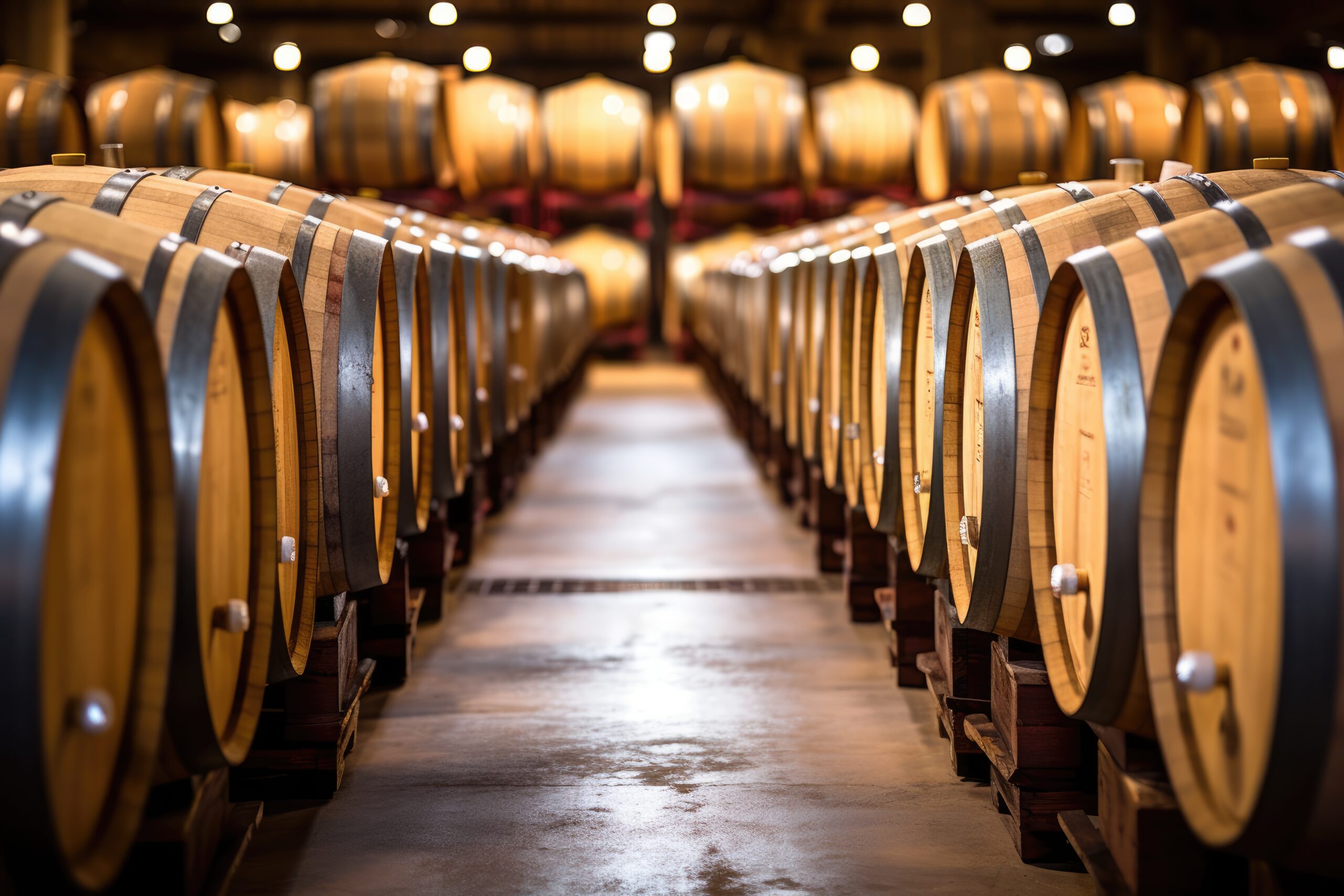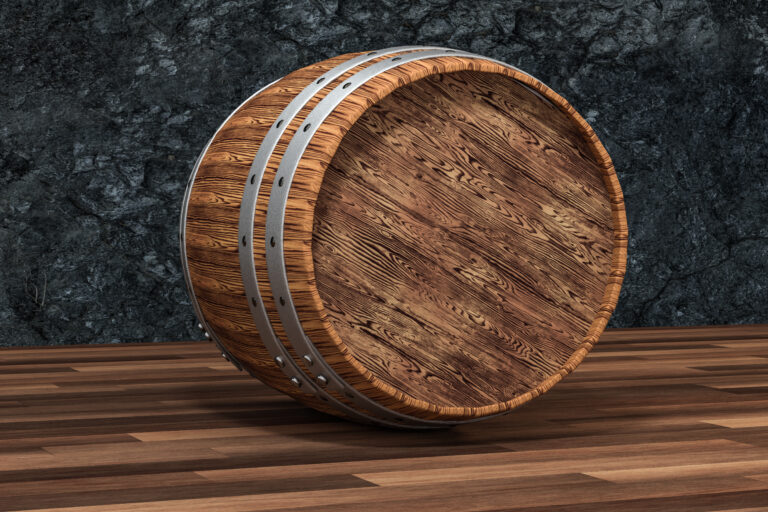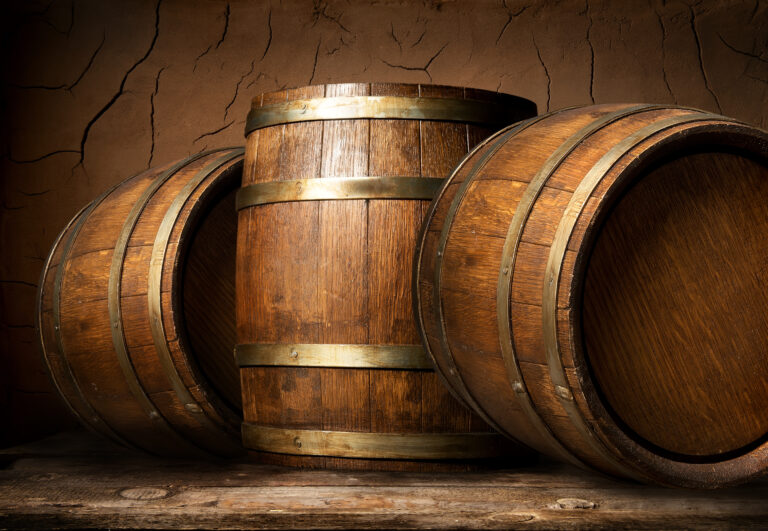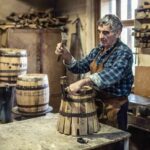Ever truly considered the journey behind the captivating flavors in your glass of whisky? It’s a fascinatingly intricate process, especially when delving into the world of peated whisky, particularly those hailing from Islay. The signature smoky notes arise from burning peat, a millennia-old, spongy accumulation of partially decayed vegetation. Yet, the peat is merely the overture. The real magic unfolds within the oak barrels where the whisky gracefully ages. A delicate interplay occurs as the wood interacts with the smoky spirit, a dance that can span decades. Over time, nuances of vanilla, spice, and dried fruit emerge, intermingling with the earthy, often medicinal, whispers of the peat. Each cask behaves uniquely, birthing a single malt scotch with a distinct flavor profile shaped by its specific aging environment and the barrel’s characteristics. So, pour yourself a dram and let’s explore the captivating transformations within those peated whisky barrels. The resulting flavors are anything but simple.
What Is Peated Whisky?
Peated whisky acquires its distinct smoky flavor from malted barley that undergoes drying over burning peat, a dense, organic sediment rich in carbon. The resulting peat smoke imbues the barley with an aroma reminiscent of a crackling wood fire and damp earth. When this barley is distilled into whisky, those smoky characteristics are carried through.
The intensity of the peatiness hinges on the duration the barley is exposed to the smoke. Longer exposure translates to a more pronounced, smokier flavor in the final whisky. Islay whiskies from Scotland, such as the renowned Laphroaig and Ardbeg, are celebrated for their intensely peaty, often medicinal flavor profiles. However, if that sounds too intense, rest assured – there are also whiskies with gentler, more balanced peat smoke notes.
The peat smoke contributes rich, earthy flavors to the whisky, including:
- Iodine and seaweed (common in Islay whisky)
- Woodsmoke and bonfire
- Tobacco and leather
- Clove and spice
Beyond the smoke, peated whiskies frequently exhibit a delightful interplay of fruity, malty sweetness that provides balance. The peat notes harmonize beautifully with flavors such as:
- Ripe pear and apple
- Vanilla and honey
- Cocoa and nut
Whether your preference leans towards the bold, peat monster Islay malts or a more subtle Highland peat, there’s no denying the unforgettable drinking experience that peated whisky offers. Once you acquire a taste for the smoke, it’s an adventure from which there’s often no turning back!
The Peating Process and How It Impacts Flavor
The peating process is the cornerstone of peated whisky’s signature smoky flavor. To craft peated whisky, the malted barley used in production is dried above a kiln fueled by burning peat. As the peat combusts, it releases phenols that permeate the barley, imparting a smoky aroma and flavor. The longer the barley remains in contact with the peat smoke, the greater the absorption of phenols, resulting in a smokier final whisky.
The Peat Source Matters
The specific type of peat employed, whether it’s derived from turf, moss, or wood, significantly influences the flavor compounds transferred to the barley. Peat from coastal regions may yield saltier, brinier nuances. Conversely, inland peat can contribute earthier, more vegetal notes. The geographical origin of the peat, be it the Scottish Highlands, the Islands, Islay, or elsewhere, also impacts its chemical composition and, consequently, the whisky’s taste.
The Peating Level
The peating level, quantified in parts per million (ppm) of phenols, serves as an indicator of the anticipated smoky intensity.
- Heavily peated whiskies (50+ ppm), such as Ardbeg or Lagavulin, present intense bonfire-like, medicinal characteristics with undertones of burning wood, tobacco, and seaweed.
- Moderately peated whiskies (20-35 ppm), like Highland Park or Talisker, offer a more balanced profile where the smoke complements sweet malty and fruity flavors.
- Lightly peated (5-15 ppm) or unpeated whiskies are mellow with subtle smokiness, allowing the distillery’s inherent style to take center stage.
Grasping how whisky acquires its peaty personality—from the source of the peat to the precise peating level—is key to unlocking the intricate flavors within every smoky, scotch-infused sip. Slàinte!
Peat Types: Their Aromas and Flavors
Peated whisky derives its distinctive smoky flavor from peat—decomposed plant matter compressed over millennia into a spongy, soil-like substance. The variety of peat utilized during malting and the extent of peating exert a profound influence on the aroma and taste of the final spirit.
Islay Peat
Whiskies originating from Islay are celebrated for their intensely smoky, maritime character, a direct result of the island’s peat bogs. Islay’s peat yields aromas of seaweed, salt, and medicinal iodine, which translate into flavors of smoked fish, tobacco, and leather in the whisky. Distilleries such as Ardbeg, Laphroaig, and Lagavulin are globally recognized for their heavily peated Islay single malts.
Speyside Peat
The peat found in Speyside, the heartland of Scotland’s whisky production, tends to be lighter and sweeter. Speyside peated malts exhibit aromas of moss, heather, and barley sugar, accompanied by flavors of toasted nuts, honey, and spice. Distilleries like Benromach and Tomintoul produce peated Speyside malts across a spectrum of peating levels.
Highland Peat
The diverse topography of the Highlands yields peat that ranges from light and grassy to dense and earthy. Peated Highland malts display aromas of bog myrtle, pine needles, and campfire, with corresponding flavors of roasted nuts, cinnamon, and charred wood. Distilleries such as Oban, Talisker, and Highland Park are known for their medium-peated Highland malts.
The specific peating level, measured in phenol parts per million (ppm), further dictates the smokiness of the whisky. Heavily peated Islay malts can reach upwards of 50-60 ppm, while most Speyside distilleries peat their malts within the 5-20 ppm range. Understanding the origins of the peat and the peating levels employed allows for a more informed prediction of a peated whisky’s flavor profile before even taking a sip.
The Role of the Barrel in Maturation
The oak barrel plays a pivotal role in shaping the distinctive flavor profiles of peated whiskies. As the spirit matures, it extracts compounds from the wood, imparting notes of vanilla, spice, and fruit. However, with peated whiskies, the smoky phenols originating from the peat-fired malted barley also interact with the barrel, creating even more intricate flavor dimensions.
Charred Barrels
Many distilleries utilize barrels that have undergone charring or toasting on their interior. This char layer, composed of activated carbon, aids in filtering and mellowing the whisky. In peated whiskies, the char can accentuate the smoky notes while simultaneously introducing sweetness. The intensity of the char influences the prominence of both the peaty and woody flavors. Lightly charred barrels may contribute more citrus and floral hints, while heavily charred barrels tend to generate richer toffee and chocolate undertones.
Type of Wood
The specific type of oak employed significantly impacts the flavor. American oak barrels, frequently used for bourbon, impart more pronounced vanilla and coconut flavors. European oak barrels, commonly used for sherry, contribute more spiced and dried fruit characteristics. Distilleries often experiment with various wood types and char levels to achieve unique flavor profiles in their peated whiskies.
Previous Contents
If the barrels were previously used to age other spirits, such as bourbon or sherry, the residual flavors also season the wood and influence the peated whisky. Barrels that once held sherry can impart flavors of raisin, nut, and spice. Used bourbon barrels tend to contribute more vanilla and caramel notes. The interplay of these flavor layers with the smoky peat phenols results in an almost limitless spectrum of taste experiences in peated whiskies.
As peated whiskies age and interact with the barrel, the harsher phenols soften while new, complex flavors emerge. Master distillers meticulously select barrels and monitor the maturation process to craft the distinctive flavor profiles that render peated whiskies so exceptional. The barrel’s char, wood type, and previous contents all contribute to the development of the layers of smoke, oak, fruit, and spice that define these smoky spirits.
How Peat Interacts With the Barrel Over Time
The flavor of peated whisky evolves over time through its dynamic interaction with the oak barrel. As the spirit matures, compounds from the peat smoke and the oak influence each other in intriguing ways.
Peat Smoke Softens
The assertive, often medicinal, notes of the peat smoke mellow and integrate with the barrel flavors over years of maturation. What was initially a dominant smokiness becomes more rounded and balanced. The peat influence remains, but in a softer, more nuanced expression.
Vanilla and Spice Emerge
Compounds within the oak barrel, such as vanillin and lignin, break down over time, releasing notes of vanilla and warm spice. These mingle with the lingering peat smoke, creating flavor profiles reminiscent of smoked vanilla, cinnamon, nutmeg, or clove.
Dried Fruit Develops
As whisky matures, esters form, producing notes of dried fruit like raisins, dates, or prunes. The peat smoke enhances these flavors, resulting in tastes akin to smoked stone fruit, molasses, or treacle.
Additional Flavors Meld
Other compounds from the oak, such as coconut or maple, may also emerge and fuse with the peat smoke. The longer the whisky matures, the more integrated and layered these diverse flavors become. Subtle hints of honey, almond, or coffee are often discernible in extra-aged peated malts.
While the initial character of peated whisky is largely defined by the peat smoke, the barrel’s influence grows increasingly significant over time. The smoke softens as the oak asserts itself, and they intertwine to form an intricate tapestry of flavors. The finest peated whiskies achieve a harmonious balance between these two distinct forces, where each enhances and enriches the other, culminating in a dram of captivating complexity.
Regional Styles of Peated Whiskies
The flavor of peated whisky is primarily determined by the type of malted barley used, specifically how it’s dried over a peat-fired kiln. The peat smoke infuses the barley with its distinctive smoky, earthy flavors before distillation. However, the geographical region where the whisky is produced also exerts a significant influence on its taste. Let’s explore some of the regional peated whisky styles and their distinguishing characteristics.
Islay
Islay (pronounced “eye-luh”) whiskies from Scotland’s southernmost island are intensely peaty, often exhibiting notes of iodine, sea salt, and medicinal flavors. Distilleries such as Laphroaig, Ardbeg, and Lagavulin are globally renowned for their heavily peated single malts. The strong peat influence stems from Islay’s abundance of peat bogs and the island’s exposure to maritime winds.
Campbeltown
The Campbeltown region once held the title of Scotland’s whisky capital. Although only a handful of distilleries remain, they produce full-flavored, often salty whiskies with moderately peaty profiles. Springbank is a prominent distillery known for its whiskies that balance briny, earthy peat with grassy and citrus notes.
Highlands
The Highland region is vast and diverse, yielding a spectrum of whiskies from light and fruity to rich and smoky. Distilleries like Ben Nevis, Ledaig, and Loch Lomond produce peated single malts with earthy, spicy, and maritime qualities. The peat influence in Highland whiskies tends to be more moderate compared to those from Islay.
Islands
Beyond Islay, other Scottish islands, including Mull, Jura, and Skye, are known for whiskies with a touch of peat and smoke. Tobermory and Scapa produce medium-peated single malts with notes of seaweed, citrus, and nuts. Talisker from the Isle of Skye is also highly regarded, featuring peppery, smoky, and sea-salty flavors.
The specific type of peat, the water source, and the distillation techniques employed also contribute to the unique flavors of these regional whiskies. Exploring the diverse range of styles is an excellent way to discover your perfect peated dram. Slàinte!
Detecting Peat and Smoke Notes in Aged Whisky
Peated whisky barrels impart a distinctive smoky flavor to the aged spirit. As peat smoke permeates the wood, it infuses the whisky with its robust, earthy characteristics. Developing the ability to detect peat and smoke in a whisky requires a discerning palate, but with practice, you’ll be identifying these key characteristics in no time.
Look for Amber Hues
Peated whiskies aged in charred barrels often develop an amber tint. The longer the aging period, the darker the color tends to become. Hold your glass up to the light to examine its shade and clarity. A rich, coppery hue can be an indicator of pronounced peaty and smoky notes.
Aroma of Burning Wood
Take a moment to appreciate the aromas emanating from your glass. Inhale deeply to detect scents of burning wood, bonfire, or cigar boxes. These smoky notes are a direct result of the peated malt and the oak barrel’s influence. You might also discern earthy, vegetal hints of damp soil, moss, and heather.
Taste the Peat
Now for the crucial step—take a sip and allow the whisky to coat your palate. An explosion of peaty flavors should emerge, reminiscent of woodsmoke, charcoal, and cigar ash. This smokiness may be balanced by sweet notes of vanilla, nuts, or dried fruit contributed by the oak barrel. A long, warming finish is a hallmark of peated single malts.
Lingering Finish
An aged, peated whisky will typically exhibit a lengthy, impactful finish. The complex flavors and aromas you initially detected will persist, subtly evolving and changing. Notes of smoke and spice might give way to hints of toasted marshmallows and baked apples. This lingering finish is a defining characteristic of a high-quality, peated single malt.
With practice, you’ll become more adept at identifying the distinct peaty and smoky notes that make peated whiskies so memorable. Slàinte!
Recommended Bottlings for Peat Fans
Peated whiskies are highly prized by enthusiasts of smoky scotch for their unique flavor profiles. The peat smoke infuses the spirit with an earthy, often slightly medicinal taste that can be divisive. If you find yourself in the “love it” camp, here are some recommended bottlings to explore.
The flagship expression from the Islay distillery Ardbeg, their 10 Year Old, is a quintessential choice for peat aficionados. Aromas of seaweed, tar, and iodine greet you before waves of smoke and spice wash over your palate. With time, nuances of honey and citrus also emerge. It’s a complex yet balanced dram with significant smoky character.
From the Isle of Skye, Talisker 10 Year Old is another beloved single malt for peat enthusiasts. The salt and smoke are beautifully balanced by notes of seaweed, pepper, and honey, culminating in a long, warming finish. It’s medium-bodied and often considered more approachable than some intensely peated Islay malts, making it an excellent introduction for newcomers to peated whisky.
Often considered the peatiest of them all, Octomore has garnered a cult following. Distilled on Islay, Octomore utilizes the highest peating levels of any Scotch, resulting in an intensely smoky yet surprisingly nuanced spirit. The .3 series often offers a significant amount of smoke balanced with underlying sweetness, while expressions with higher peating levels, such as the 6.1 and 7.3, amplify the phenols for a maximum peat experience. Definitely recommended for seasoned peat lovers!
Other excellent peated single malts worth exploring include:
- Laphroaig 10 Year – An iconic Islay malt with distinctive medicinal peat smoke and seaweed notes.
- Lagavulin 16 Year – Rich, smoky, and complex, showcasing a beautiful interplay of peat, oak, and sherry cask influences. A staple for any peat enthusiast.
- Bowmore 15 Year – A more mellow Islay malt with a harmonious blend of peat, honey, sea salt, and subtle sherry sweetness.
- Highland Park 12 Year – While not as intensely peated as some Islay whiskies, it offers a delightful balance of heather, honey, and oak complementing the smoke. A versatile Highland malt.
Whether your preference leans towards the full-frontal assault of an Octomore or the more nuanced smoke of a Talisker, there’s a peated dram out there to satisfy every level of peat fanatic. Slàinte!
Understanding Peated Whisky Barrels FAQs
Peated whisky acquires its signature smoky flavor from malted barley that has been dried over an open peat fire. The smoke permeates the barley, which is subsequently used to produce the whisky. As the spirit matures in charred oak barrels, it absorbs compounds from the wood that complement the existing peaty notes.
The type of wood used for the barrels, typically oak, significantly influences the final flavor. American oak, often sourced from Kentucky, imparts sweeter notes of vanilla and spice. European oak, commonly used for Scotch whisky, contributes more resinous, clove-like flavors. The barrel’s char or toast level also affects the spirit, with more heavily charred wood yielding flavors of chocolate, coffee, and nuts.
The age of the barrel also matters. As barrels mature, they gradually lose their ability to impart flavor to the whisky. Most distillers utilize barrels between 3 to 30 years old to achieve maximum flavor impact. The age of the whisky itself, ranging from a minimum of 3 years to 30 years or more, determines how mellow and layered the peaty, smoky flavors become.
The geographical origin of the barley contributes subtle nuances to the peatiness. Barley from Islay, a Scottish island renowned for its intensely peaty whiskies, tends to produce more medicinal, iodine-like flavors. Conversely, barley from Speyside or the Highlands often yields an earthier, more heathery smoke character.
Numerous other factors, such as the distillery’s water source, yeast strain, and distillation methods, also play a role in shaping the flavor of the final whisky. However, the choice of barrel and the duration of maturation in wood remain among the most significant influences on a peated whisky’s taste and aroma profile. The most rewarding way to fully appreciate the intricate harmony of smoke and oak in these complex, flavorful spirits is by simply savoring a glass.
Final Thoughts
So there you have it, a deeper understanding of the intricate processes that lend peated whisky its characteristic smoky allure. The next time you find yourself enjoying a glass of your favorite single malt, take a moment to appreciate the symphony of flavors that converge in that beautiful amber spirit. You’ll likely discern the subtle hints of vanilla and spice imparted by the oak barrel. You might even detect the delicate floral and fruity undertones derived from the malted barley. And, of course, you’ll recognize the unmistakable aroma of peat smoke, evoking images of cozy evenings by a crackling fire. Peated whisky is truly a spirit to be savored and contemplated, as you unravel the myriad layers of flavor concealed within each dram.







